Tensile Structures
In this architecture project we are taking a look at the cable tensile structures as an example for the architecture design section. A tensile structure is a construction of elements carrying only tension and no compression or bending. The term tensile should not be confused with tensegrity, which is a structural form with both tension and compression elements. Tensile structures are the most common type of thin-shell structures.
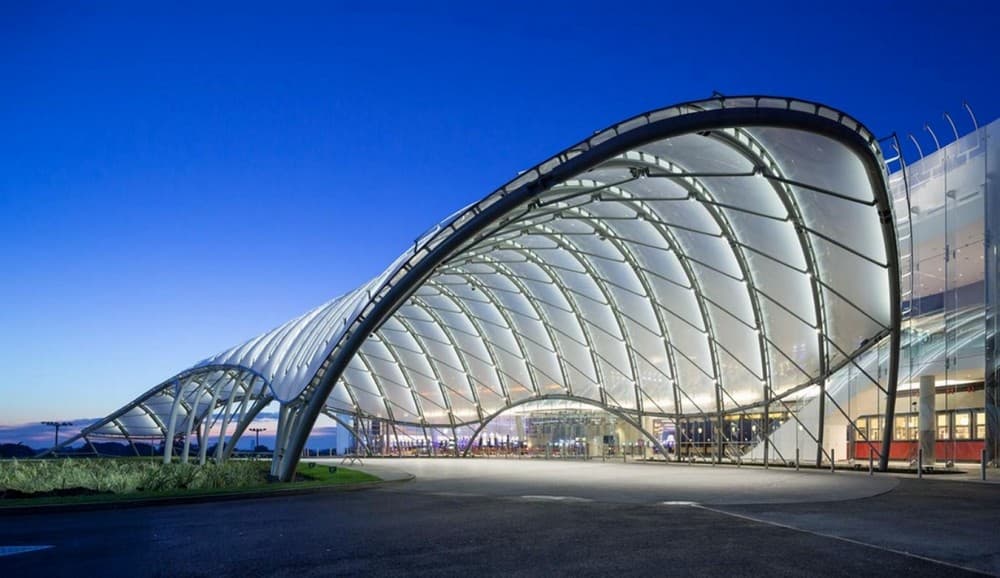
Most tensile structures are supported by some form of compression or bending elements, such as masts (as in The O2, formerly the Millennium Dome), compression rings or beams. A tensile membrane structure is most often used as a roof, as they can economically and attractively span large distances. Tensile membrane structures may also be used as complete buildings, with a few common applications being sports facilities, warehousing and storage buildings, and exhibition venues.
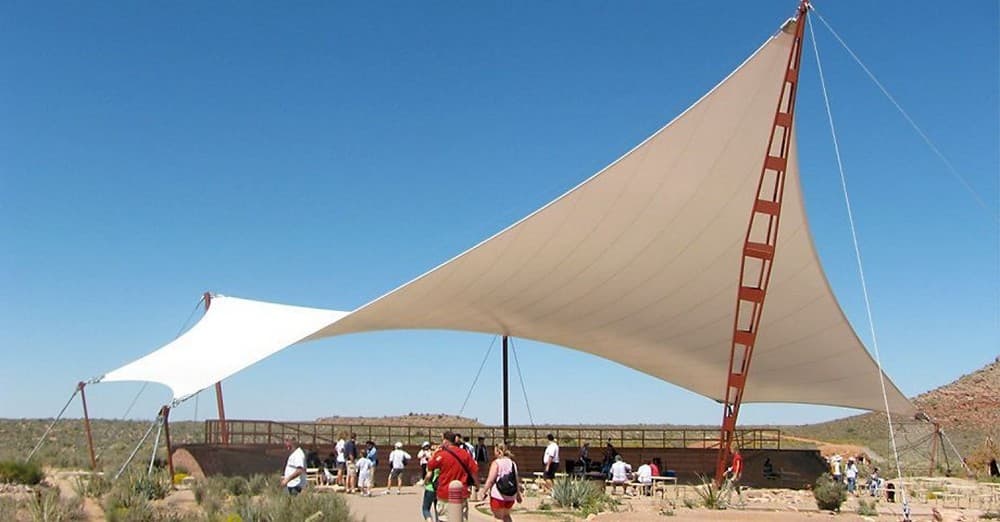
Common materials for doubly curved fabric structures are PTFE-coated fiberglass and PVC-coated polyester. These are woven materials with different strengths in different directions. The warp fibers (those fibers which are originally straight—equivalent to the starting fibers on a loom) can carry greater load than the weft or fill fibers, which are woven between the warp fibers. Other structures make use of ETFE film, either as single layer or in cushion form (which can be inflated, to provide good insulation properties or for aesthetic effect—as on the Allianz Arena in Munich). ETFE cushions can also be etched with patterns in order to let different levels of light through when inflated to different levels.
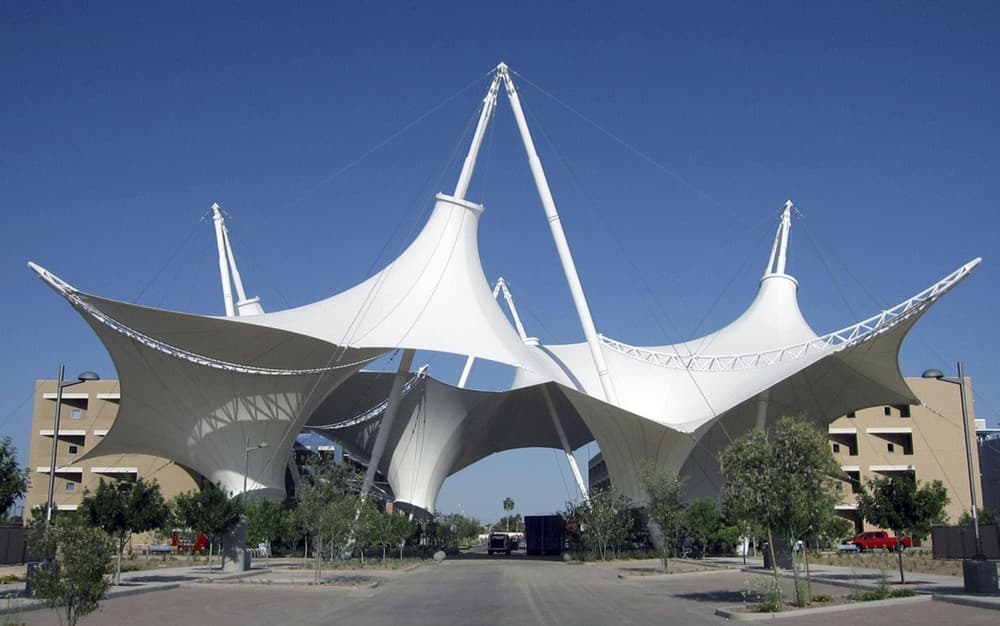
Air-supported structures are a form of tensile structures where the fabric envelope is supported by pressurised air only. The majority of fabric structures derive their strength from their doubly curved shape. By forcing the fabric to take on double-curvature the fabric gains sufficient stiffness to withstand the loads it is subjected to (for example wind and snow loads). In order to induce an adequately doubly curved form it is most often necessary to pretension or prestress the fabric or its supporting structure.
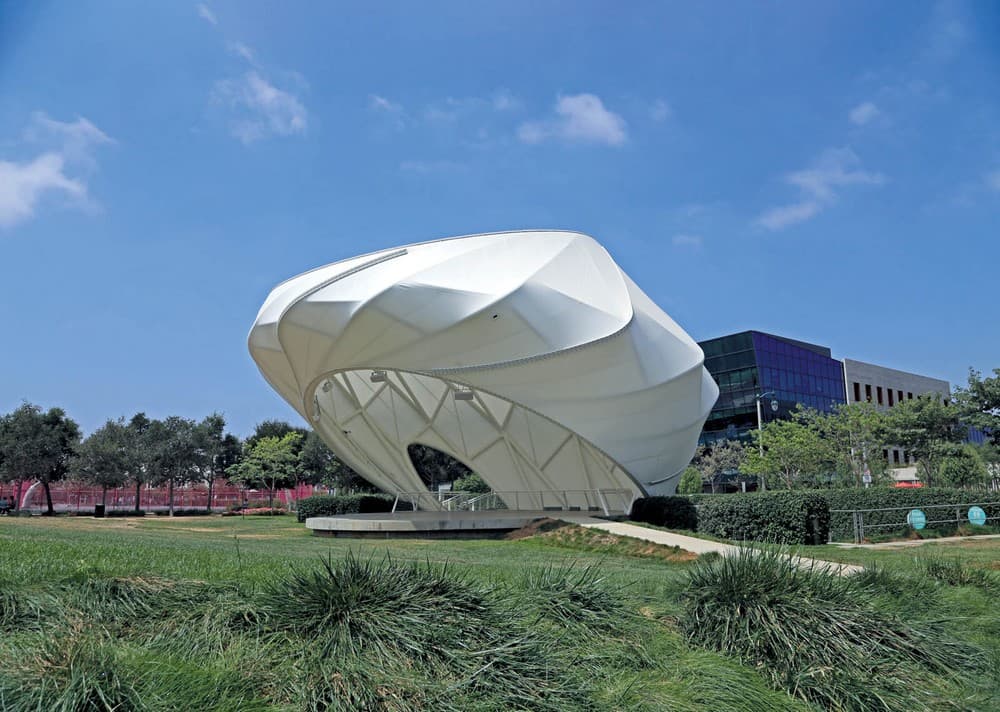
There are many different doubly curved forms, many of which have special mathematical properties. The most basic doubly curved from is the saddle shape, which can be a hyperbolic paraboloid (not all saddle shapes are hyperbolic paraboloids). This is a double ruled surface and is often used in both in lightweight shell structures (see hyperboloid structures). True ruled surfaces are rarely found in tensile structures. Other forms are anticlastic saddles, various radial, conical tent forms and any combination of them.
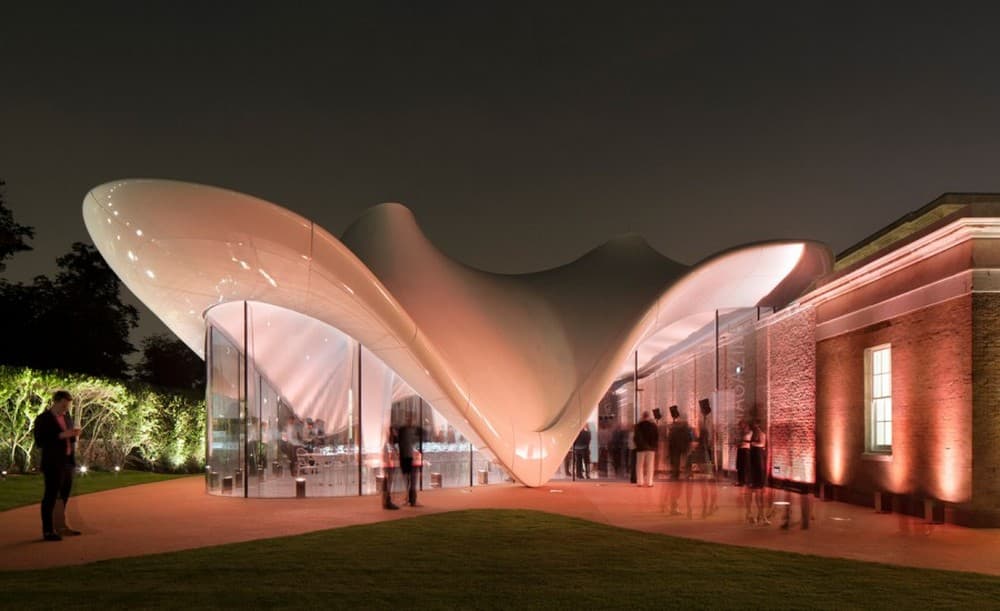




























Comments